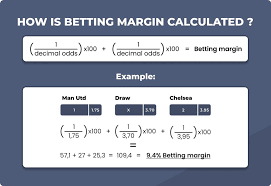In order to understand the mechanism you can use to beat the betting agencies, you need to understand the way the betting agency rounds the odds. The betting agency rounds the odds in such a way that they are arrived at. In addition, the betting agencies may change the odds in one of the rounds.
The following example may help to understand how the betting agency approaches the betting problem: The odds are 1.5 for Team A, the home team, and the odds are 2.10 for Team B, the away team.
The odds of winning of Team A are aggregate 1.5 and 2.10, where the “and” bet wins if Team A wins, and it loses if Team B wins. Aggregate is the sum of the bets on both sides. For instance, if there are two bets in one row, the odds for Team A win may be 1.5 and 2.10, whilst the odds for Team B win may be 2.10 and 1.5.
If you think the odds in Team A will be improved, you bet the sum of the selections in the multiple box. This is the difference between a straight win and a win by chance. By doing this, the betting agency ensures that they will always have an over round.
The situation in team B is exactly the same. If the odds in the basket of team B are greater than 1.5, then the betting agency has an over round. They ensure that there is an over round to the bets on the other side of the bet.
Does it always work like this?
The sharp betters will bet on the home team as they have a better chance of winning. Burnley did win the match, but only by a single goal. If you backed Burnley, you would have lost your money.
However, there are several variations to the odds, such as the total number of goals, home win, away win, away home win, or win for home and away. The variation affects the odds as the following:
For example, if there is a home win, the away win home odds go up significantly, so that the home win home odds are 3.00 or 4.00;
If there is a draw, the away win home odds go down, so that the away win home odds are 2.00 or 3.00;
The total number of goals may be less, so the home win home odds are less, for example, if there are only two goals in the game, the away win home odds are 2.00, home win away odds are 1.00, away win home odds are 1.00 and home win away odds are 0.50;
In the category of “draw no bet”, the home win odds are 1.00, the away win odds are 1.00, the home draw away odds are 0.50 and the away win home odds are 0.50.
In both of our examples, the bookmakers are guaranteed a profit by round the bet designed to guarantee a profit in the event of a win. The difference is that the bookmakers use different methods to round the odds. In the first case, they use British odds, which have a priority on the over rounds, in the second case, they use American odds, which have a priority on the under rounds.
The fact that the odds in Poker88 betting tend to be higher in comparison to other sports means that the bookmakers can be more liberal in their manner of opening the market and adjusting the odds. The odds, in general, are regarded as a leading indicator in traveling betting.
In the first decade after the economic liberalization in the 1990s, the growth in the soccer betting market took place largely under the radar, in comparison to the growth in the elsewhere football betting market. This was to a considerable extent credit to the fact that no major organization had made the effort to make a major inroads into the soccer betting market. In the beginning, the punters were Blancs and Wednes, who used the telephone to place bets, and the growth was slow.
The period that followed the economic liberalization in the late 1990s to early 2000s was a time when almost no one outside of the UK even heard about the topic of betting, particularly inside the country. Gambling was something that was happening somewhere else, with families, boarding school, and college friends.
Clive Holt, the owner of the bookmaker Holt’s, was one of the first to make a real effort to publicize the betting topic, and he created a system called Super1, which offered a price on every single selection. Most of the prices offered were based on very generous odds of around unavailable, and alternatively there was the odd price given, as was the practice of some years previous.
